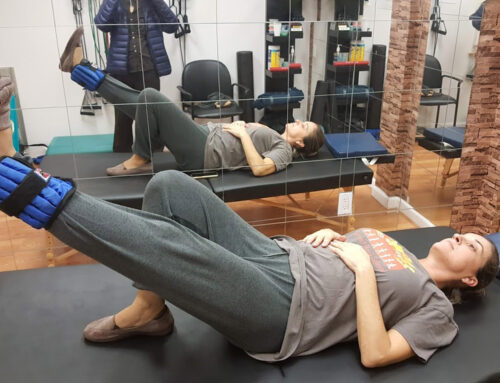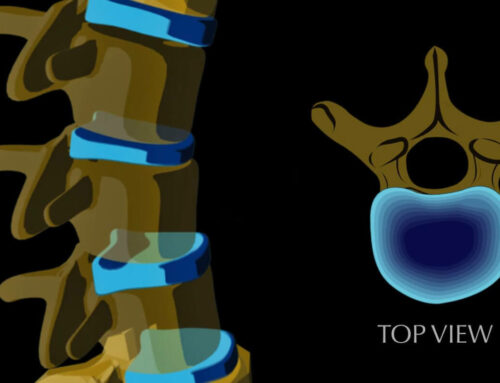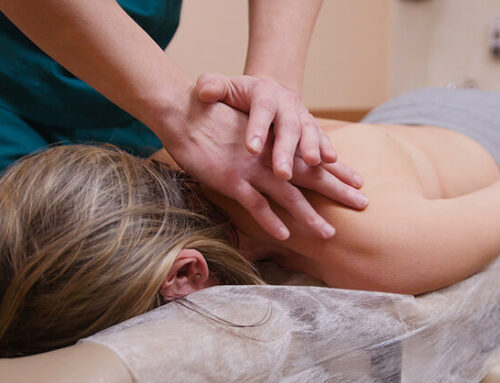
Here are eight ways that physical therapy can help you relieve your pain and treat your condition.
Managing Pain Without Opioids
One of the reasons that there was an epidemic of people addicted to opioids was how free doctors were with prescribing them to patients or hospitals were in doling them out. While they can help relieve pain, they are very easy to become physically addicted to… and that can lead to a lot of terrible behavior down the road, along with even more health problems.
That’s where physical therapy can be such a tremendous help to people coming out of surgery or are managing an injury. The physical therapists can show patients natural and safe ways to manage pain without having to reach for the pill bottle. Exercise can be a fantastic way to alleviate the hurt.
Avoiding Surgery
Surgery should be the last resort, not the first, Physical therapy should be one of the the first things attempted… a physical therapist can work with a patient and get them strong enough to be able to move around and do things in spite of the injury – while not setting up to make matters worse down the road, of course.
Athletes can really benefit from this. One prime example is New York Yankees pitcher Masahiro Tanaka, who was being advised in 2014 to have Tommy John surgery to repair a tear in his rotator cuff – a procedure that would shelve him for at least one season. He elected to build up the area around the cuff… and he has yet to miss any time.
Helping Recover From Injury or Trauma
It’s important for the physical therapist to build a bond of trust with the patient during this process. Not all trauma is physical and injuries can also leave emotional scars. Should there is a bridge in place for the physical therapist to reach out and also help emotionally as they build up the physical part, it can mean a world of difference.
Besides doing physical work with the patient, the physical therapist can help them learn ways to cope at home or work on themselves when not at the gym. The human connection can be tremendous.
Improving Mobility and Movement
This is a big part of physical therapy – one of the main goals. There may be several different components to it, depending on the severity of the situation. The physical therapist may have to do all of the movements at first, but then the patient can slowly graduate to being assisted some to doing things all by themselves.
Stretches and exercise play a big part and eventually the patient will be getting a regimen to do on their own after the physical therapy sessions end.
Recovering From Paralysis or Stroke
Either having paralysis or a stroke can feel debilitating for a person. They lose the ability to do many of the things involving movement that they took for granted in the past. It can feel like a daunting task for them to regain it. That’s where the physical therapist will come in.
The patient will often be starting from scratch when they start the physical therapy sessions – they have to relearn what came as second nature in the past. In essence, they have become babies again. Fortunately, they will have the physical therapist there to guide them as they take steps toward standing, walking, sitting down, or even being able to switch from doing one thing to another.
Preventing Falls
While falls do tend to be more of a hazard for older people, there are many other reasons people can fall – including disease or vertigo. Working with a physical therapist on specific ways to avoid falls can be quite beneficial.
One of the best ways to do this is to increase physical activity in ways that both increase strength and balance. One method of physical therapy includes doing something called multi-component exercises – this means it works on more than one area. They can also work with the patient on using things like walkers or canes as a way to keep balanced and greatly reduce the risk of falling.
Improving Balance
One might think that this category is essentially the same as the one above it. White there are some similarities, there are many more people affected by this problem. The exercises here can go beyond the ones that are designed to stop falls. A physical therapist will assess everything from a person’s core to their inner ear and there are things they can do to tilt the odds in their favor.
These exercises include doing things like standing on one leg, doing heel-toe walking (both forward and backwards), doing various head motions while walking (to try to work with inner ear), and also looking at different things while walking. All of these things can improve the coordination of one’s gait.
Managing Age-Related Medical Problems
Balance and falls are far from the only things that older people deal with. They may have trouble moving around due to arthritis. Other conditions like dementia or Parkinson’s can come into play. Physical therapy can help them regain the sense of independence that they had in the past or simply aid them in becoming far less of a danger to themselves – and this includes finding ways to make their homes safer, like having them wear protective pads for falls and putting foam bumpers on the corners of tables.
Physical therapy can be a tremendous benefit to a wide range of people in many aspects of their lives. Once they have started it, they can find themselves on a road to wellness. They just need to take that all-important first step.
The staff at Phoenix Physical Therapy Rehabilitation PLLC can work with patients to get past all of these issues. They have three convenient locations – Brooklyn, Rosedale, and Levittown. They are dedicated to bringing out the best health in everyone – give them a call to make an appointment: (347) 733-1916.
Published By:
Phoenix Physical Therapy
Rosedale Location
23520 147th Avenue, Suite 1,
Rosedale, NY, 11422
Levittown Location
2920 Hempstead Turnpike,
Levittown, NY 11756
Brooklyn Location
7510 4th Ave., Suite 3,
Brooklyn, NY, 11209
Phone: (347) 733-1916







